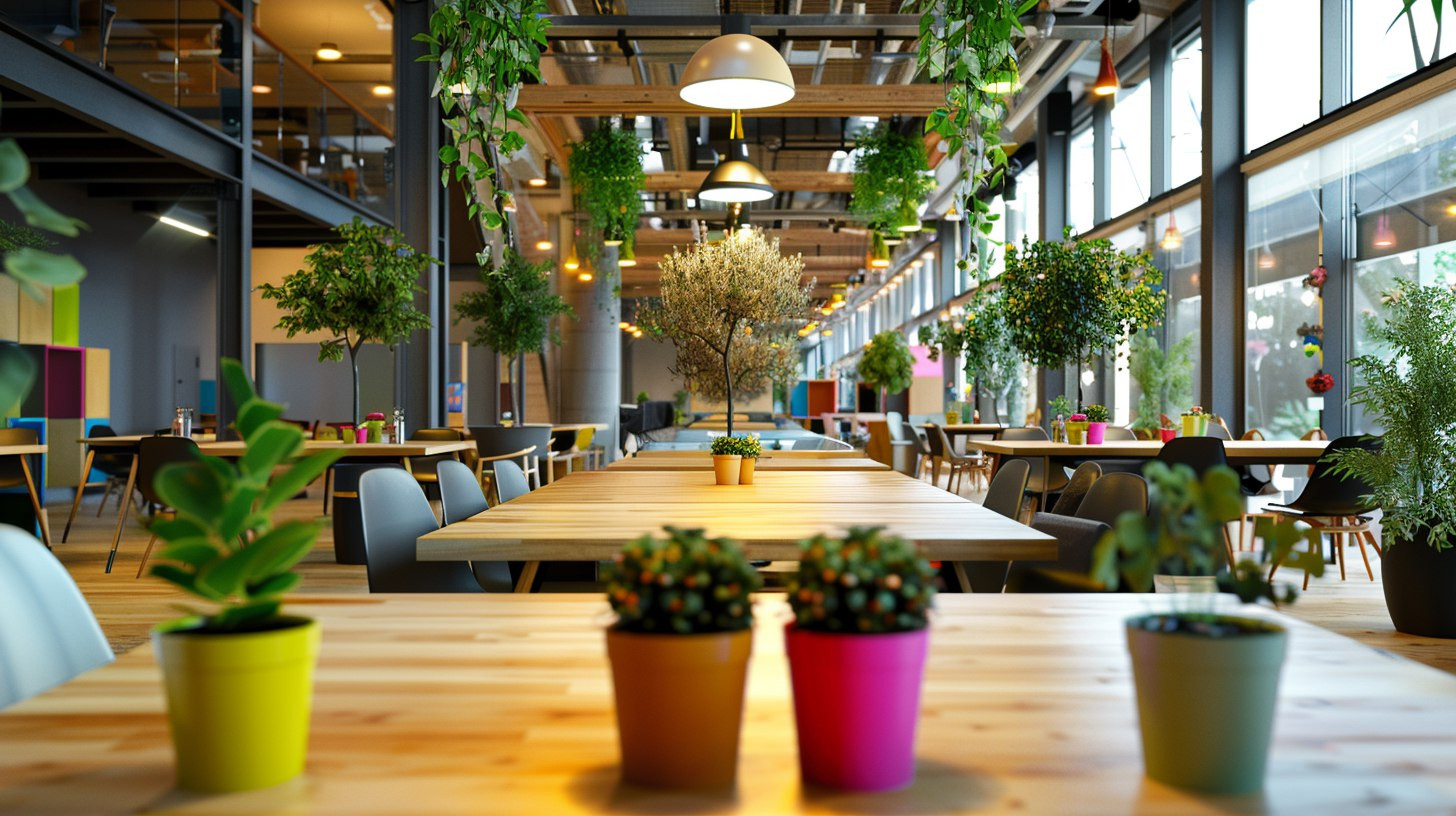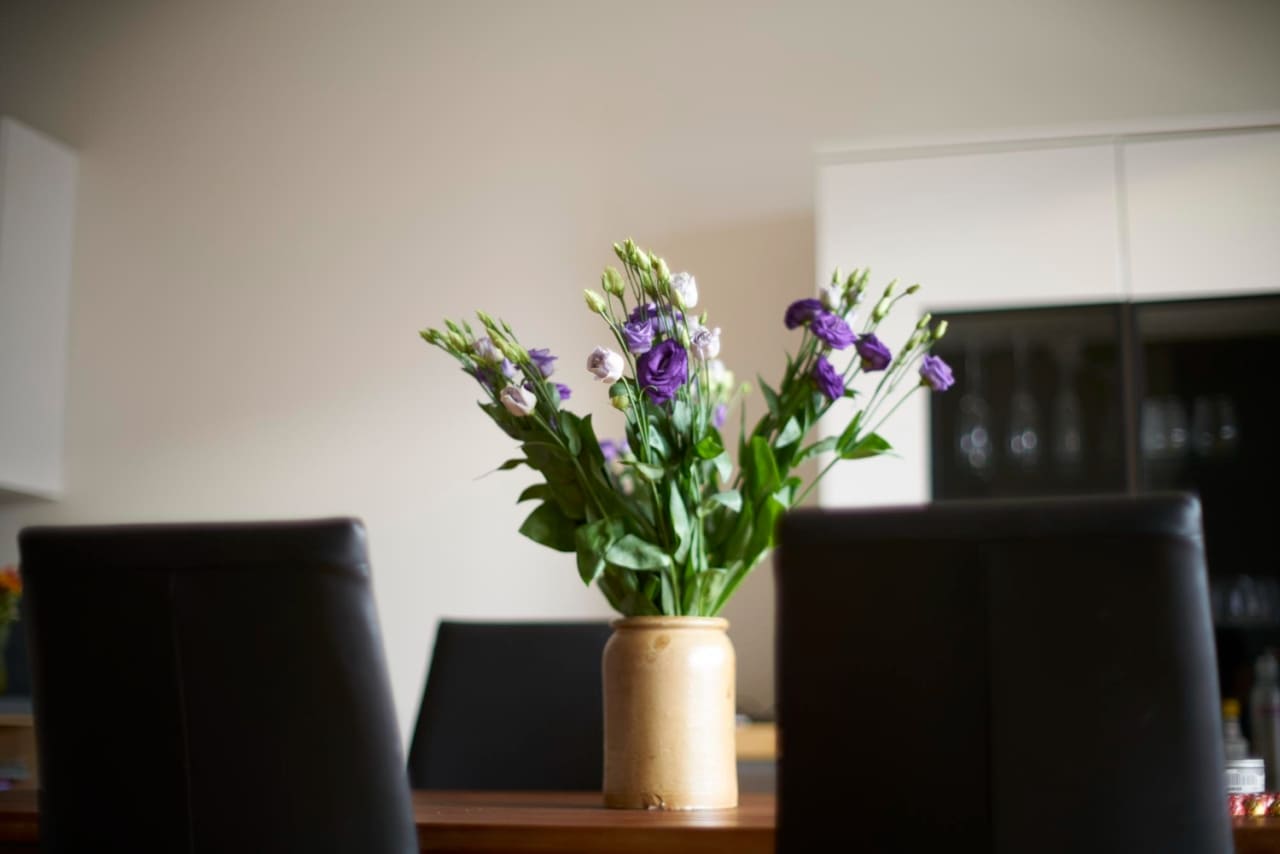
Office Decoration with Flowers. How to Increase Employee Productivity
In today's world, where a significant part of our lives is spent in the office, the importance of creating a comfortable and aesthetically pleasing working environment cannot be overstated. The aesthetics of office space play a key role not only in forming the first impression of the company but also in the daily influence on mood, well-being, and most importantly, employee productivity.
Recent research in the field of organizational psychology and workspace design confirms that greening offices not only improves the physical but also the psychological health of employees. The presence of plants in the office is associated with reduced stress levels, improved concentration, and overall increased job satisfaction. This, in turn, leads to a noticeable increase in productivity and work efficiency.
Theoretical Justification
Studies conducted around the world show that decorating an office with flowers and plants has a profound effect on the mental state of employees and their productivity. For example, research by scientists from the University of Texas showed that workers whose workspaces were enriched with green plants demonstrated a significantly higher level of creativity and innovative thinking compared to those who worked in a more sterile environment.
The psychological impact of plants on people is also undeniable. Flowers and plants in the office help create a sense of comfort and coziness, reduce stress and anxiety levels among employees. Green color, associated with nature and recovery, promotes relaxation and helps focus on work. Adding to this the aromatherapeutic effect of certain flowers and plants, we obtain a powerful tool for influencing a person's emotional state and productivity.
Thus, incorporating floristic elements into office space is not just a matter of decor but a strategic tool for managing well-being and productivity of employees. Creating a green oasis in the office is an investment in the health and efficiency of the team, the results of which are expressed not only in productivity figures but also in the overall atmosphere of the team and its attitude towards work.
Principles of Choosing Flowers for the Office

Decorating an office with flowers requires careful consideration, where each element has value. The choice of flowers and plants must match the corporate style and design of the office, supporting the overall concept and culture of the company. This creates a harmonious working atmosphere and helps maintain the company's brand.
The importance of considering corporate style: Flowers and plants should complement the office's color scheme, not overload it. For example, in an office with minimalist design and neutral color palette, elegant white orchids or unobtrusive green plants would fit well.
Psychological impact: The use of flowers in the office can affect mood and productivity. The green color of plants reduces stress levels and promotes concentration, while bright flowers can stimulate energy and creativity. Introducing flowers and plants into workspaces requiring high levels of concentration or a creative approach can be particularly beneficial.
Choosing Flowers According to Workspace Type:
- Open spaces: Large plants that can serve as natural dividers are ideally suited here.
- Meeting rooms: Use flowers and plants that promote calmness and concentration, for example, lavender or aloe.
- Private offices: Here, you can place plants on a desk or shelf, choosing types that require minimal care but also contribute to relaxation and stress reduction.
Best Plants for the Office
When choosing plants for the office, it is necessary to consider their ability to purify the air, care requirements, and appearance. Some of the most recommended include:
- Spathiphyllum: Purifies the air from toxins and requires minimal care.
- Ficus: Known for its ability to improve air quality and give the office a green and fresh look.
- Zamioculcas: Attractive and undemanding plant that feels good in office conditions.
- Aloe: Purifies the air and can serve as a natural remedy for minor office injuries.
Care tips:
- Regularly check the soil in pots to avoid both overdrying and overwatering.
- Ensure your office plants receive enough light, avoiding direct sunlight that can harm some types.
- Regularly clean the leaves from dust to improve photosynthesis and the appearance of plants.
Choosing and caring for plants in the office should not become burdensome. The correct selection of plants, suitable for your workspace conditions and requiring minimal attention, can significantly improve the office atmosphere and contribute to the overall productivity and well-being of employees.
Practical Tips for Implementation
How to start:
- Planning: Identify which areas of the office need greening and which plants are suitable for each of them.
- Budget: Calculate the cost of purchasing and caring for the plants. Do not forget to consider the possibility of renting plants, which can be a budget-friendly solution.
- Plant selection: Prefer undemanding and air-purifying plants adapted to office conditions.
Placement recommendations:
- Place plants in common areas to create a relaxing atmosphere.
- Use plants for zoning space in open offices.
- Place floral compositions in meeting rooms to improve visual perception and reduce stress.
Creating a favorable microclimate:
- Ensure an adequate level of humidity and lighting to maintain the health of the plants.
- Regularly ventilate the room to provide fresh air for both employees and plants.
- Consider using air humidifiers in the winter period to maintain optimal humidity levels.
By applying these tips, you will be able to create not only an aesthetically attractive but also a functional workspace that will contribute to improving the well-being and efficiency of employees.
Benefits for Business
Return on Investment in Office Greening

Greening the office space is not just an aesthetic improvement but a strategic investment in productivity and employee health. Research shows that the presence of plants in the office contributes to reducing the level of illness among employees as plants improve air quality and reduce stress. This leads to a decrease in sick leave days and increases overall productivity. Moreover, investments in greening increase employee loyalty as they feel the company's care for their well-being.
Improving the Appearance of the Office as an Attractiveness Factor
A workspace decorated with green plants not only contributes to employee well-being but also serves as an important factor of attractiveness for clients and potential new employees. An aesthetically pleasing office creates a positive first impression, highlighting the company's ecological and modern approach to organizing the workspace.
Frequently Asked Questions (FAQ)
Q: What plants are best suited for the office?
A: Plants that require minimal care and are well adapted to indoor conditions, such as spathiphyllum, zamioculcas, ficus, and sansevieria, are suitable for the office.
Q: How often should office plants be watered?
A: The frequency of watering depends on the type of plant and the conditions in the office. On average, most office plants need watering once a week.
Q: Where is the best place to put plants in the office?
A: Plants should be placed in areas with sufficient natural light, avoiding direct sunlight. They can also be used for zoning space.
Conclusion
Decorating the office with flowers and plants is not only a way to create a pleasant atmosphere but also an important element of the strategy for improving the well-being and productivity of employees. Greening the space improves air quality, reduces stress, and forms a positive image of the company. Business leaders and managers aiming to create a healthy and productive working environment should consider greening as an investment in the future of their business and the well-being of their team.
We advise business leaders and managers to actively implement the practice of greening office spaces, choosing suitable plants and creating favorable conditions for their growth and development. These investments will definitely pay off by increasing work efficiency and improving the overall atmosphere in the team.











